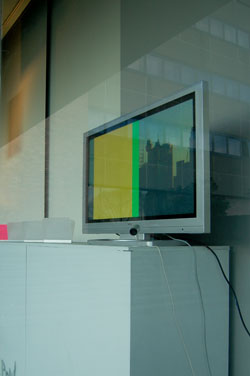Surveillance, forensics and hive minds: contemporary social consciousness is cool!
by Deborah Turnbull on 18 OCT 2009
Do you ever feel like technology is against you? Last month, the month before the rego on my car was due, I had to take it in twice for servicing due to the sad little sound it made when I tried to start it (oooowwwwwwwwwwwwwwoooohhhhh). I am now the owner of a brand new $185 European battery. I own a 1993 Dae Woo…tell me why the fancy battery? Then, once my Woo was running again, I came home to a crashing symphony in my kitchen that turns out to be my fridge humming at a much higher frequency than normal. The crash at the end before the motor turns off indicates that it may have left the muffler a few kitchens back…sigh. During months like these, I feel as though perhaps my electronics are in cahoots. Not the laptop, iPod or wireless modem; but the older appliances…the iron, the fridge, my car, the clock radio, and sometimes even the antennae on my box TV set. Are they all in it together…are they surveilling me?...waiting for the opportune moment to accept their engineering blueprints as obsolescent objects and just settle into the scrap yard with all the other old appliances?
Hmmmmmm. I received a happenstance invitation to a performance along this vein last month. Happenstance in the event that my tech manager was called to their aid at the last minute to find out how to correctly trash a Windows 3.0 system so that it could be used in subsequent performances. Sometimes, I love our world and the artists that inhabit it (other times I don’t, but I’m trying to do this Complaint Free World thing, so I am keeping my complaining to a minimum…sigh). The artist was Julia Burns and the location was the Cleveland Street Theatre (the old Performance Space). I knew Burns work through our collaborations at Beta_space, and I had seen her installation prowess in works such as The Gaze and Drifting (the latter a Beta_space prototype that garnered her funding from D/Lux Media Arts to develop and tour the finished product). I also can’t say her last name with thinking of Mr. Burns from the Simpsons and tapping my fingers together while saying “egggggggggggggcellent!”, but that’s another story.
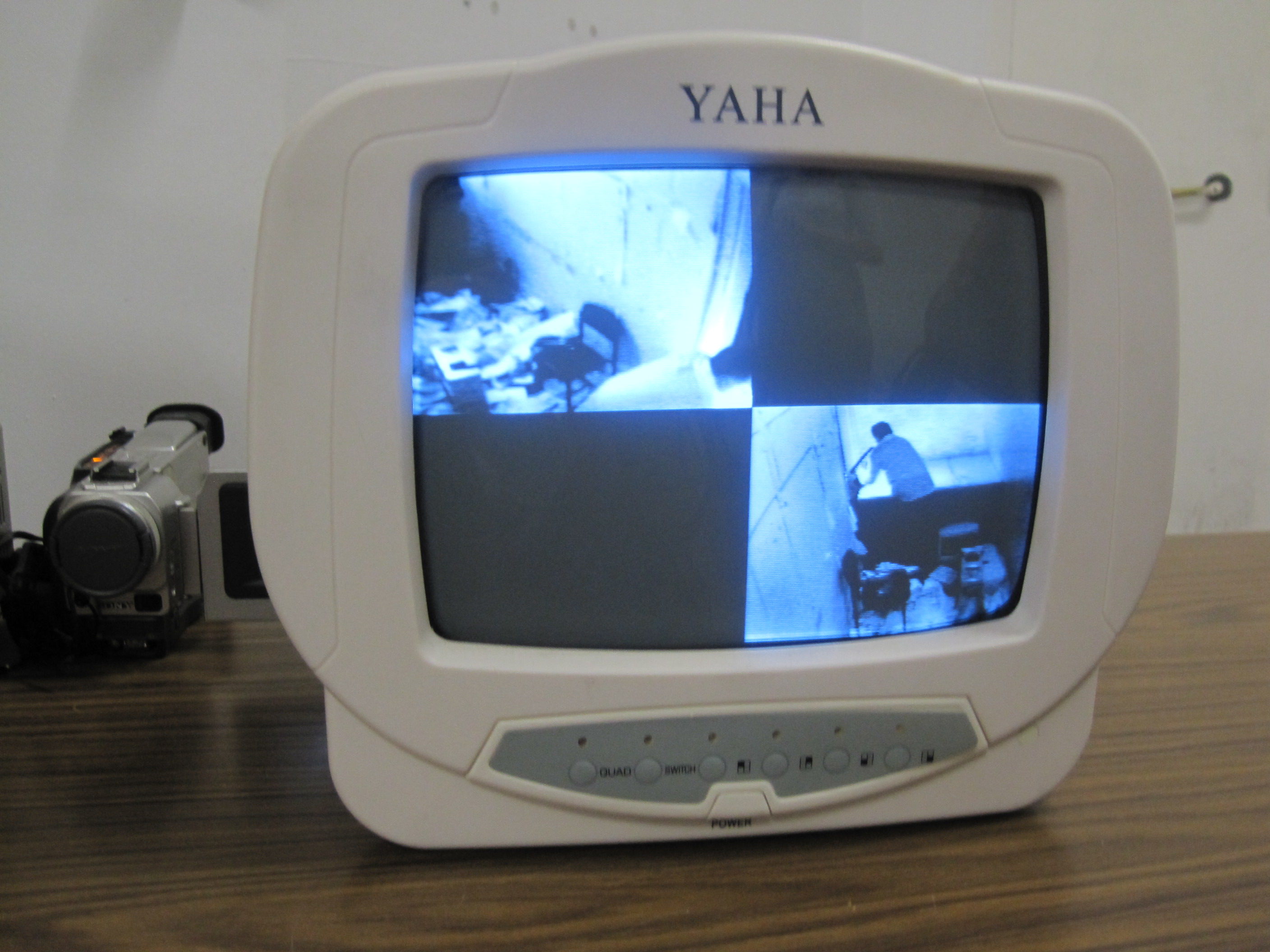 Aram and I arrived right on time, and were greeted by Julia, offered wine, and introduced to her collaborators. The first objects for our perusal (and subsequent analysis) were a small television with a quartered screen atop a non-descript table. This television depicted the image of a man working at a computer in an enclosed space. This space was one of 3 we were moving through, the 2nd of which we were about to enter. This room was set up almost exactly like any surveillance room from a 70s-inspired tv show. There was large electronic equipment like suitcase-sized recording devices, a reel-to-reel playback system, multiple rows of beige filing cabinets…even moldy pizza. Too excited to listen to the content of the reel-to-reel, I explored the photos plastered over whiteboards and got as close to the old-timey equipment as I could. There were even cigarette butts in an ashtray, this room was authentic!
Aram and I arrived right on time, and were greeted by Julia, offered wine, and introduced to her collaborators. The first objects for our perusal (and subsequent analysis) were a small television with a quartered screen atop a non-descript table. This television depicted the image of a man working at a computer in an enclosed space. This space was one of 3 we were moving through, the 2nd of which we were about to enter. This room was set up almost exactly like any surveillance room from a 70s-inspired tv show. There was large electronic equipment like suitcase-sized recording devices, a reel-to-reel playback system, multiple rows of beige filing cabinets…even moldy pizza. Too excited to listen to the content of the reel-to-reel, I explored the photos plastered over whiteboards and got as close to the old-timey equipment as I could. There were even cigarette butts in an ashtray, this room was authentic!
The next room we went into was an intermediary one, almost a storage area fit out with a tv screen boasting footage of another performance work of Julia’s. Shown in black and white and stretched to further evoke a hurriedness associated with a quick set up, there were benches strewn about. The space had the smell and feel of storage unit, even down to the artist placing personal objects in it to ensure the space was realistically rendered (plus, I’m always happy to see that we have the same wallet made out of recycled jam tins and purchased at the PHM gift shop).
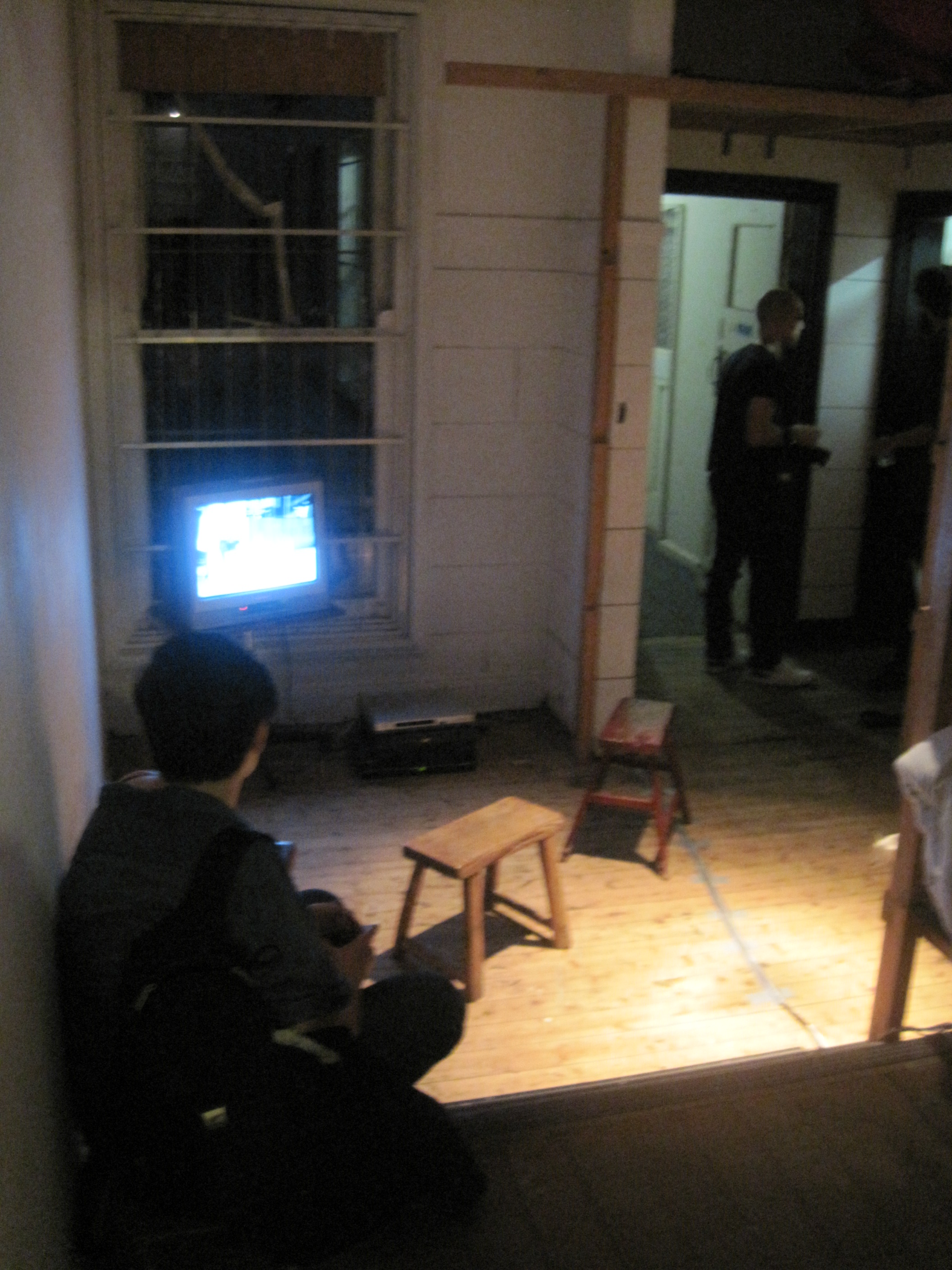
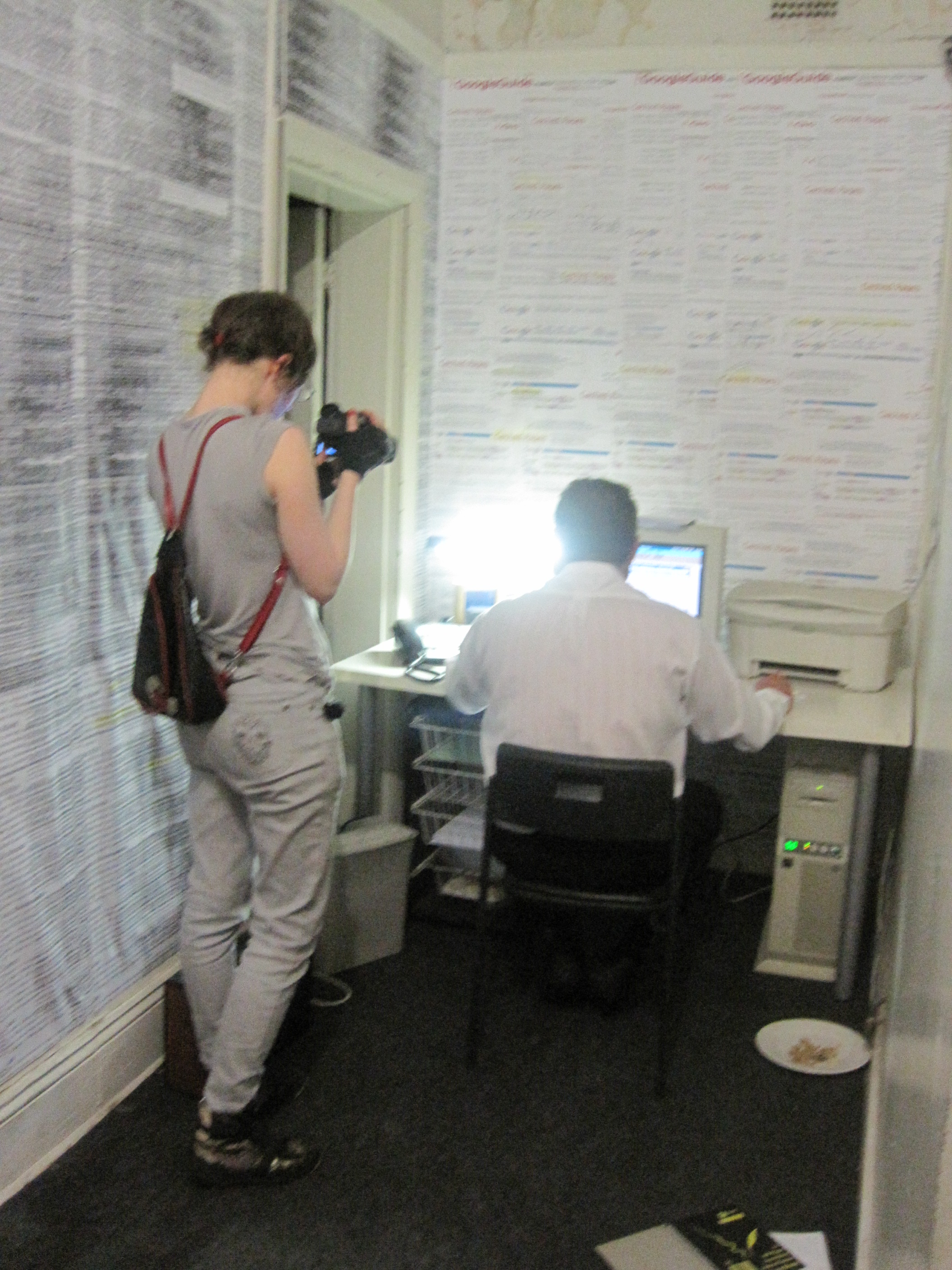
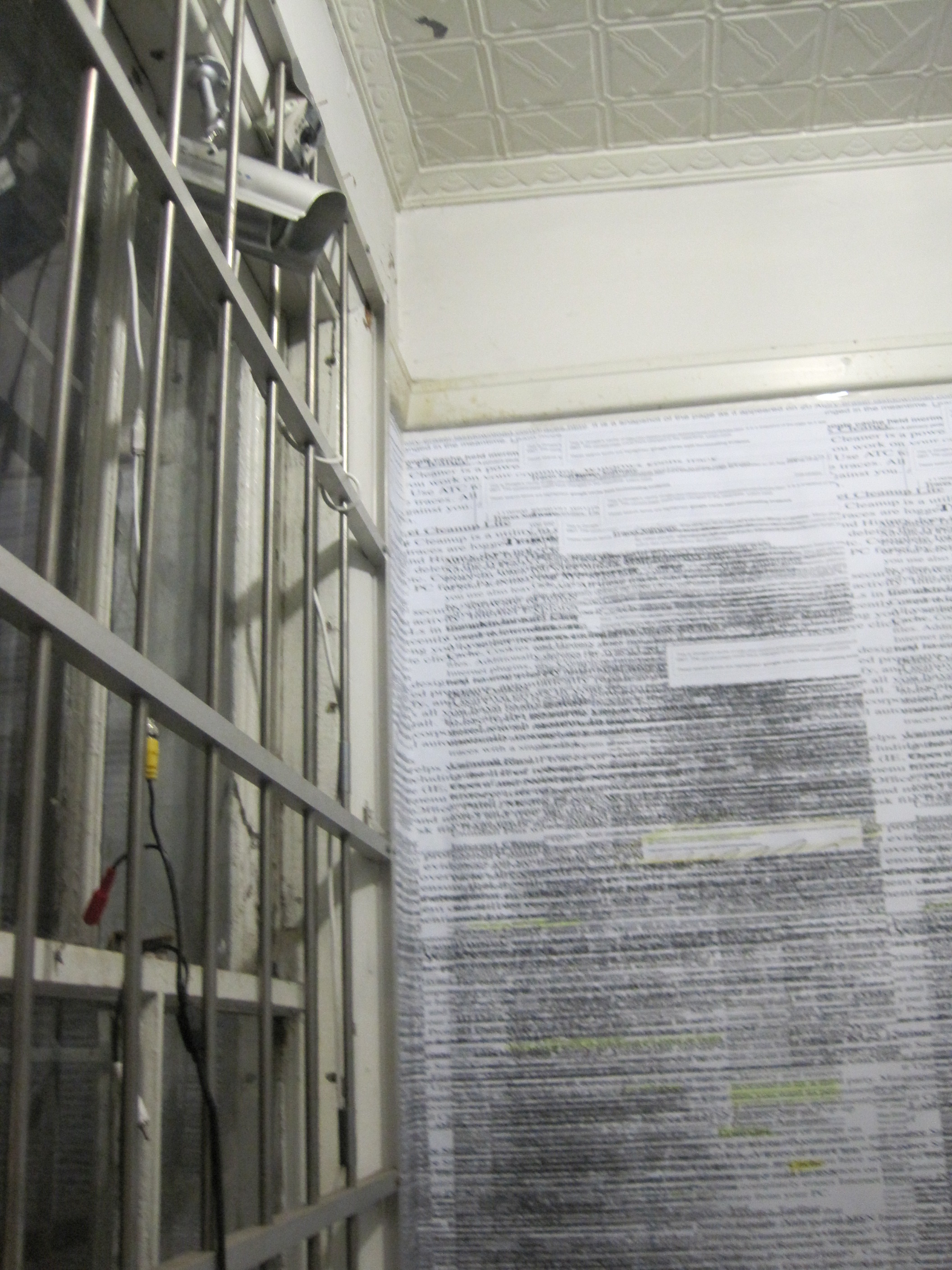
The final room held a live performance. The gentleman sitting at the screen was clearly anxious. There was a security camera pointed directly at him, solving the mystery of the quartered image on screen in the first room. The walls were lined with sheets of paper depicting line after line of code, internet searches, and Google results. Something was starting to fall into place for me in terms of understanding the spaces and how they fit together. Someone was definitely watching this man.
Julia then came up to me, asking for feedback. Now I don’t know about you other curators out there, but this is always a tricky situation. This time it was made even trickier by the fact that I had been talking to Fee Plumely when Jules approached, a colleague I knew when she worked at ANAT. She had recently moved up to Sydney from Adelaide to work for the Australia Council as the Digital Arts Officer. In layman’s terms, she decides which new media artists get funding and she lives and breathes technology enhanced arts experiences. She’s pretty cool actually, and I’m honestly not saying that with dollar signs in my eyes. Now, my feedback for Julia was this: I love it, it’s fantastic, how did I not even know you were doing this? Why didn’t you ask me for help, I could have done some running around for you, or worked out some signage.... and it went on like this for a little bit while she stared at the wall waiting for something useful she could take away with her to improve her work, boost her reputation and garner representation (her current ultimate career goal).
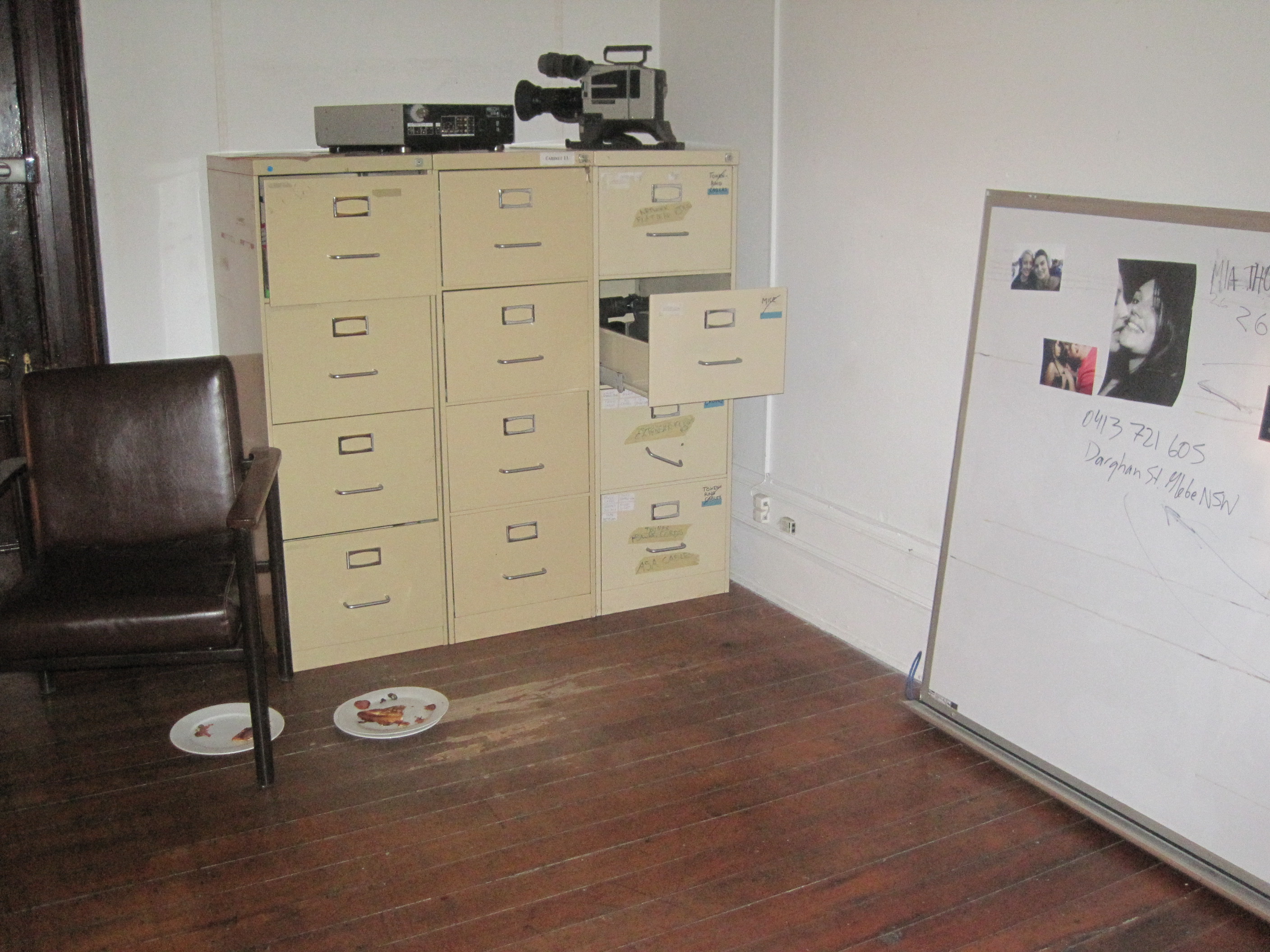 With Fee also trying to make sense of my ramblings, Julia interrupted me to ask me point blank if I understood the overall theme. Yes, I think so. It’s about surveillance of the gentleman in the back room. At this point she said, “Did you ENTIRELY miss the fact that this was about Facebook and online surveillance?” To which I answered, well, um yes. “But what about the reel-to-reel dialogue?” Jules demanded. I was too excited by the installation to listen! There was moldy pizza in there! I replied. “But what about all the edited photos, they’re cropped, like you do on FB all the time, didn’t you realise?” I thought they were regular surveillance photos of suspects or stalking targets, I answered again, pleased with my last minute, quasi-intriguing analogy (cough, cough, ahem!). Fee’s eyes darted back and forth. Julia declared: “Deborah, please tell me you realised WHAT the gentleman in the back is up to…” at this point, her eyes pleaded with me so badly, I took what I thought was quite an educated guess. Well he’s clearly done something illegal and he’s trying to cover it up. Is he the one the missing blokes in the first room are after? “How did you know that?” Jules asked sharply, sensing a kindness in my reply. Because he’s nervous, and his agitation is increasing, and because Aram told me he’s going to trash the computer. I was trying to make her laugh with that last comment….“Didn’t you READ any of the code covering the wall?! “ she said slowly and purposefully in what was her last attempt to hope that I had tied all 3 rooms together. Not all of it, there was a lot. “Goddammit, I should have done labels,” Julia sighed deflated. Next time, call me and I will do the labels, I said, putting my arm around her shoulders. Wine? I asked. She nodded gratefully, “Yes please Deb, red. I haven't slept in four days.” Ooh, I'd better hurry then...
With Fee also trying to make sense of my ramblings, Julia interrupted me to ask me point blank if I understood the overall theme. Yes, I think so. It’s about surveillance of the gentleman in the back room. At this point she said, “Did you ENTIRELY miss the fact that this was about Facebook and online surveillance?” To which I answered, well, um yes. “But what about the reel-to-reel dialogue?” Jules demanded. I was too excited by the installation to listen! There was moldy pizza in there! I replied. “But what about all the edited photos, they’re cropped, like you do on FB all the time, didn’t you realise?” I thought they were regular surveillance photos of suspects or stalking targets, I answered again, pleased with my last minute, quasi-intriguing analogy (cough, cough, ahem!). Fee’s eyes darted back and forth. Julia declared: “Deborah, please tell me you realised WHAT the gentleman in the back is up to…” at this point, her eyes pleaded with me so badly, I took what I thought was quite an educated guess. Well he’s clearly done something illegal and he’s trying to cover it up. Is he the one the missing blokes in the first room are after? “How did you know that?” Jules asked sharply, sensing a kindness in my reply. Because he’s nervous, and his agitation is increasing, and because Aram told me he’s going to trash the computer. I was trying to make her laugh with that last comment….“Didn’t you READ any of the code covering the wall?! “ she said slowly and purposefully in what was her last attempt to hope that I had tied all 3 rooms together. Not all of it, there was a lot. “Goddammit, I should have done labels,” Julia sighed deflated. Next time, call me and I will do the labels, I said, putting my arm around her shoulders. Wine? I asked. She nodded gratefully, “Yes please Deb, red. I haven't slept in four days.” Ooh, I'd better hurry then...
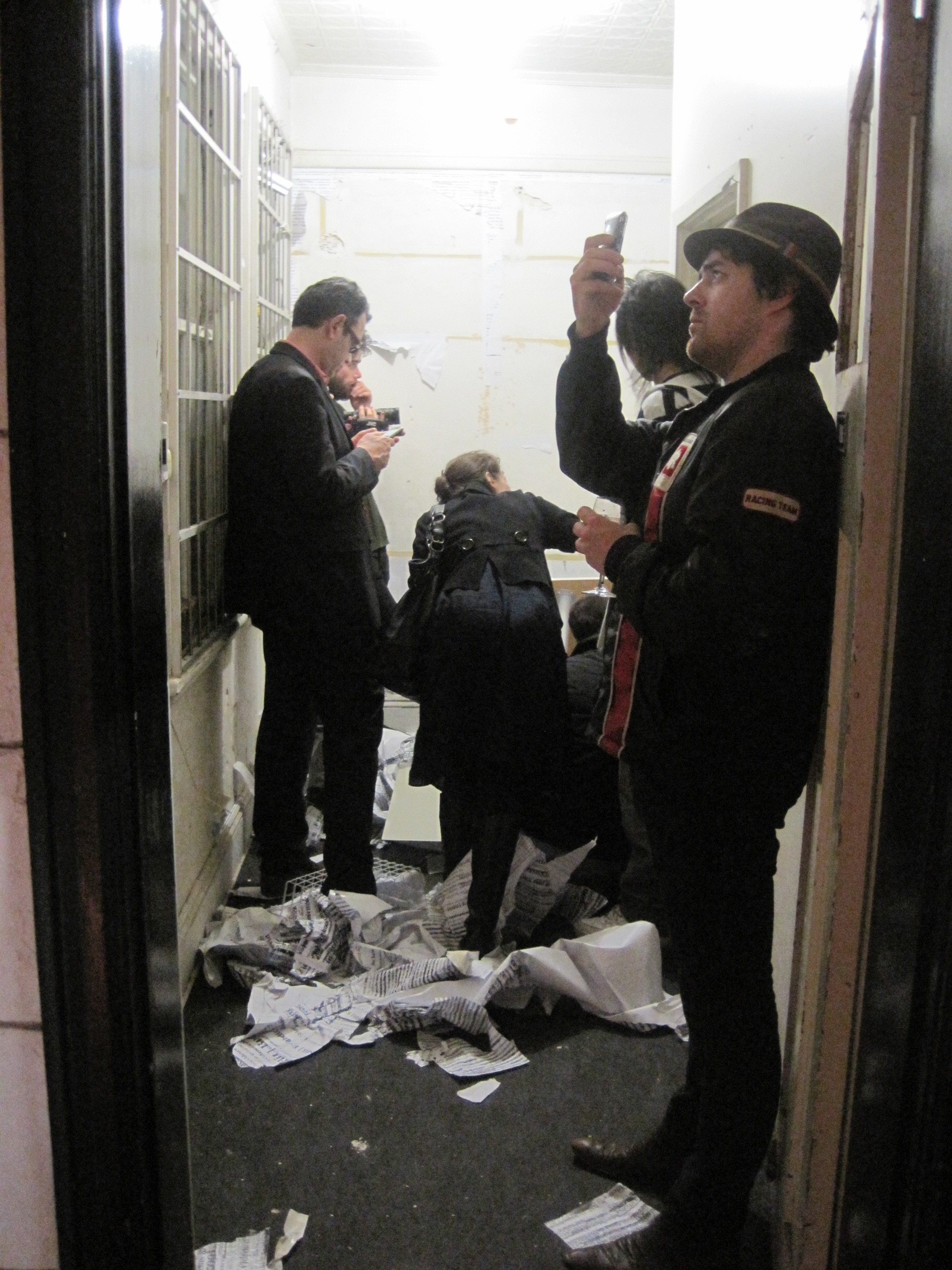
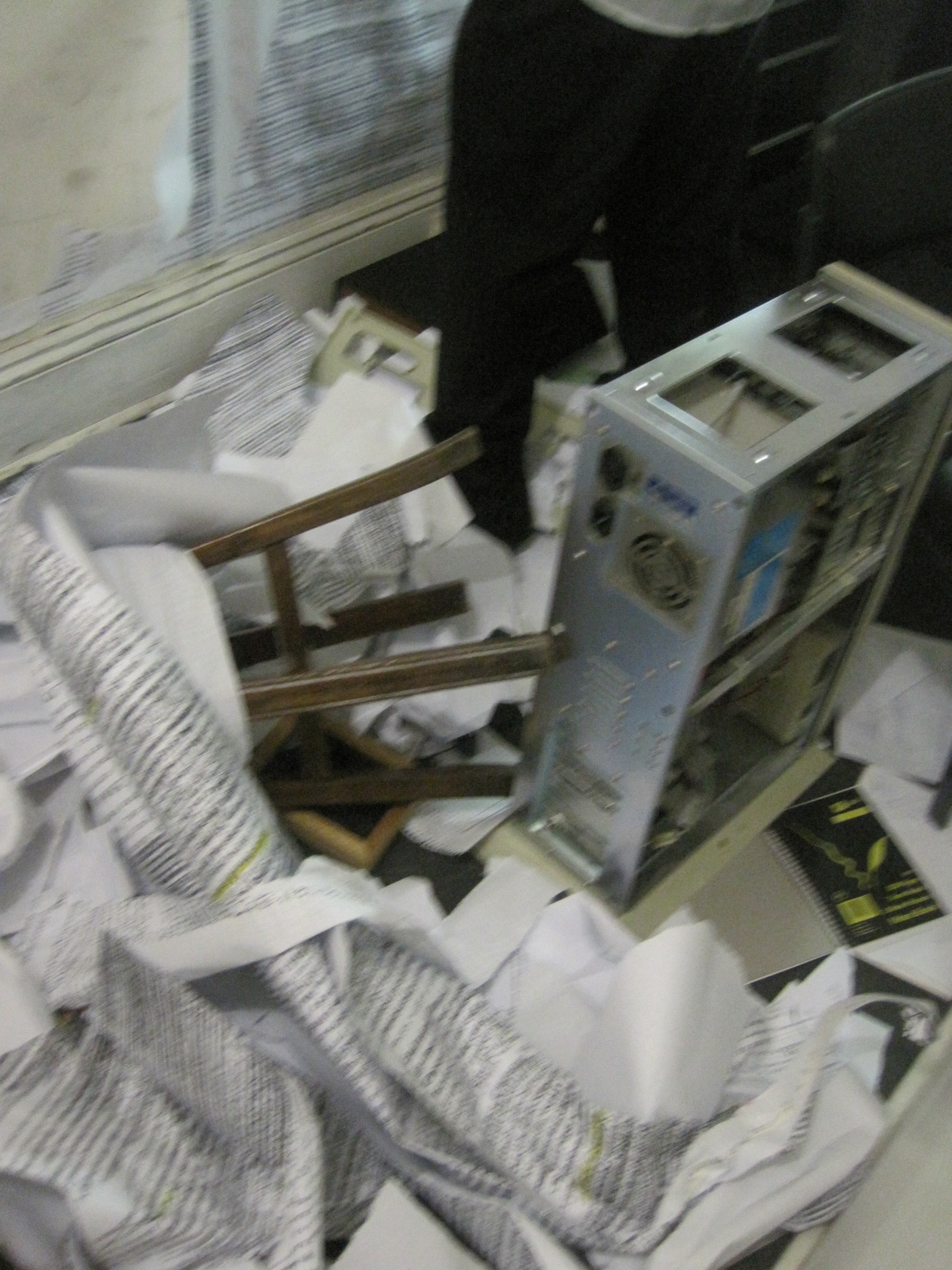 When I came back with a tumbler full, I heard her talking to Fee about her performance work in Martin Place. It was a Twitter based work, in which she set up an installation in Martin Place that looked like her lounge-room and Twittered. This was fed back to the general public, much to their interest actually, on a large screen behind Julia. Aside from being a fantastic art work, Julia also gleaned new rights for performance artists from the local council. As it turns out they previously only gave licenses to buskers. Well not anymore, I tell you! As I handed the wine over, things were starting to heat up in the back room. Julia melted into a wall to watch the reactions of the audience, while Fee and I joined Vasili Kaliman (already in a front row spot) to watch this person melt down, taking all his frustrations out on his hard-drive. As the videographer dodged motherboards and errant chips, said actor took out an exacto-knife and started cutting up the wallpaper of coded paper. In a frenzy he tore at the sheets, pulling them down, sweating, cursing, and spitting. He even cut himself by accident and bled on his own shirt! It was more than a little exciting, and in my own frenzy, I dodged out to the first room to have my experience mediated by the quartered screen, suspending my disbelief and inserting myself into the installation as one of the surveillance cops. Very. Exhilarating. Indeed!
When I came back with a tumbler full, I heard her talking to Fee about her performance work in Martin Place. It was a Twitter based work, in which she set up an installation in Martin Place that looked like her lounge-room and Twittered. This was fed back to the general public, much to their interest actually, on a large screen behind Julia. Aside from being a fantastic art work, Julia also gleaned new rights for performance artists from the local council. As it turns out they previously only gave licenses to buskers. Well not anymore, I tell you! As I handed the wine over, things were starting to heat up in the back room. Julia melted into a wall to watch the reactions of the audience, while Fee and I joined Vasili Kaliman (already in a front row spot) to watch this person melt down, taking all his frustrations out on his hard-drive. As the videographer dodged motherboards and errant chips, said actor took out an exacto-knife and started cutting up the wallpaper of coded paper. In a frenzy he tore at the sheets, pulling them down, sweating, cursing, and spitting. He even cut himself by accident and bled on his own shirt! It was more than a little exciting, and in my own frenzy, I dodged out to the first room to have my experience mediated by the quartered screen, suspending my disbelief and inserting myself into the installation as one of the surveillance cops. Very. Exhilarating. Indeed!
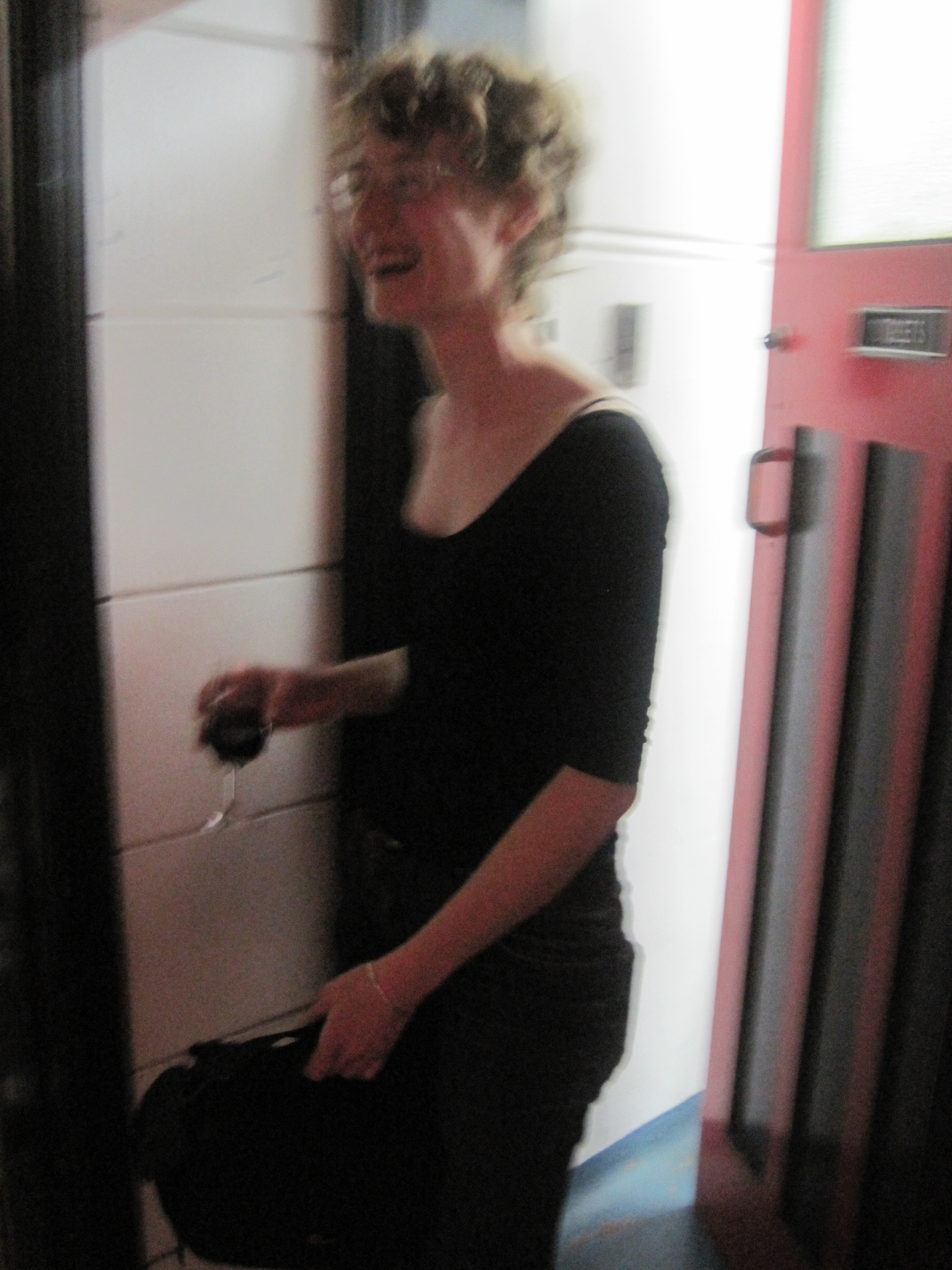 I tell you, I was well pleased with the evening, especially as I also had an outstanding conversation with Vasili about how FB is one of our new forms of public consciousness. Well, actually I said it was a hive mind, like the Borg in Star Trek Next Generation, but Vasili talked me round to agreeing with him about the public consciousness (apparently it's only MAYBE a huge cybernetic organism that relies on us to exist...). It’s also where people go to find out news, be entertained, and share in a contained form of public expression. It really is akin to heading on down to any news station and joining in on the morning/evening newsfeed while simultaneously sharing thoughts on photos of your sister’s new hair style (it’s pretty awesome, Ness!). I was a little jealous when Vasili told me he had over 800 friends (I’ve always been quite proud of my 300+ status), but he is a well known art dealer who does a lot of his promotion through online social networking tools, expressly Facebook and Twitter. He’s told me previous that without it, he might not have made it through our recession (or he would have, though not looking so dapper as he usually does!).
I tell you, I was well pleased with the evening, especially as I also had an outstanding conversation with Vasili about how FB is one of our new forms of public consciousness. Well, actually I said it was a hive mind, like the Borg in Star Trek Next Generation, but Vasili talked me round to agreeing with him about the public consciousness (apparently it's only MAYBE a huge cybernetic organism that relies on us to exist...). It’s also where people go to find out news, be entertained, and share in a contained form of public expression. It really is akin to heading on down to any news station and joining in on the morning/evening newsfeed while simultaneously sharing thoughts on photos of your sister’s new hair style (it’s pretty awesome, Ness!). I was a little jealous when Vasili told me he had over 800 friends (I’ve always been quite proud of my 300+ status), but he is a well known art dealer who does a lot of his promotion through online social networking tools, expressly Facebook and Twitter. He’s told me previous that without it, he might not have made it through our recession (or he would have, though not looking so dapper as he usually does!).
Check out Julia Burns' very timely works: Facebook Forensics and Cached Evidence.



 As such, she has inspired me to write about clothes...well, exhibitions about clothes anyways. I know they aren't interactive or necessarily NEW media, but the more I work with digital, filmic, and computational work, the more interested I become in tangible objects, or the ephemera of exhibitions. And what 30-something professional isn't interested in fashion, right? I mean COME ON! I have to wear a UNIFORM to work...and it is comprised of a blue striped shirt not dissimilar to Bananas in Pajamas....sigh. You can see why when Alison Gwilt, Course Director for Fashion & Textiles @ UTS, asked me to participate as project manager for UTS Gallery's recent exhibition
As such, she has inspired me to write about clothes...well, exhibitions about clothes anyways. I know they aren't interactive or necessarily NEW media, but the more I work with digital, filmic, and computational work, the more interested I become in tangible objects, or the ephemera of exhibitions. And what 30-something professional isn't interested in fashion, right? I mean COME ON! I have to wear a UNIFORM to work...and it is comprised of a blue striped shirt not dissimilar to Bananas in Pajamas....sigh. You can see why when Alison Gwilt, Course Director for Fashion & Textiles @ UTS, asked me to participate as project manager for UTS Gallery's recent exhibition 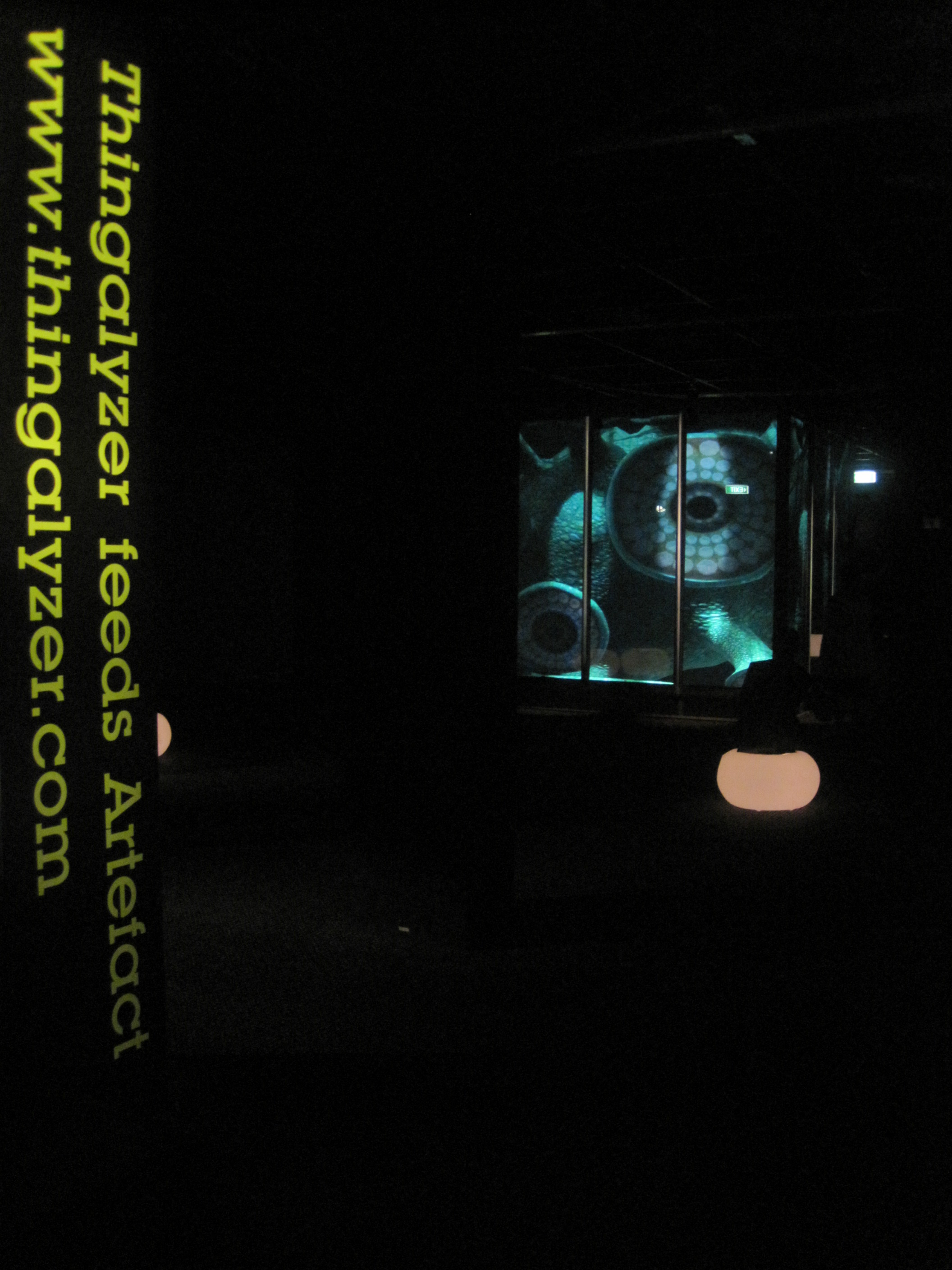 It was 9:00am one work-a-day morning when my boss told me to round up my fellow PHM staff. We were to go to training at Switch House Level 1 for a new artifact on exhibition in the museum. Where I had been yawning and rubbing my eyes while sorting email, that piece of knowledge perked me up more than my morning soy mocha had. Apparently this new work was interactive, experiential, immersive, and get this: ALIVE! Rumour had it that it even required feeding…
It was 9:00am one work-a-day morning when my boss told me to round up my fellow PHM staff. We were to go to training at Switch House Level 1 for a new artifact on exhibition in the museum. Where I had been yawning and rubbing my eyes while sorting email, that piece of knowledge perked me up more than my morning soy mocha had. Apparently this new work was interactive, experiential, immersive, and get this: ALIVE! Rumour had it that it even required feeding… 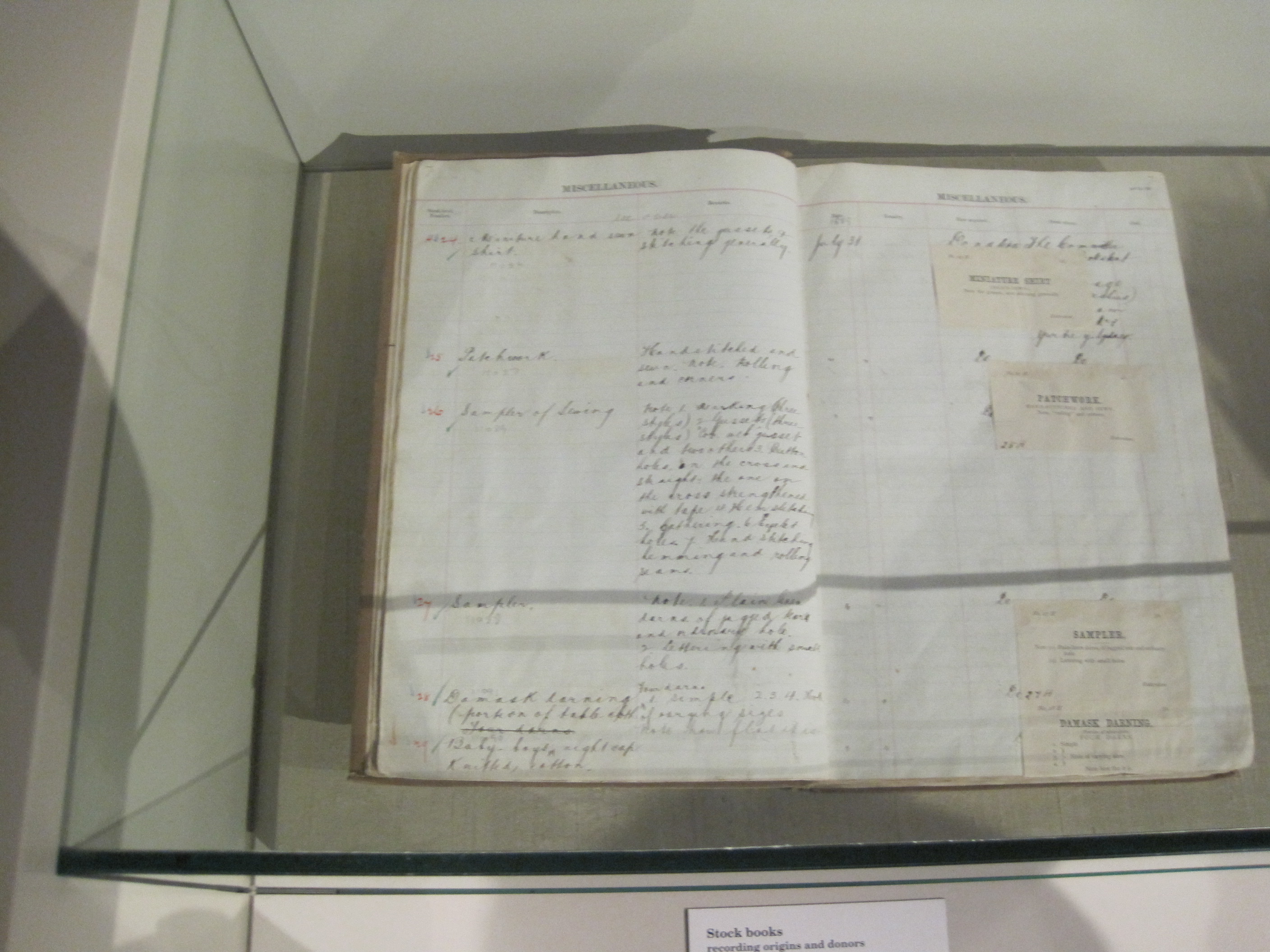
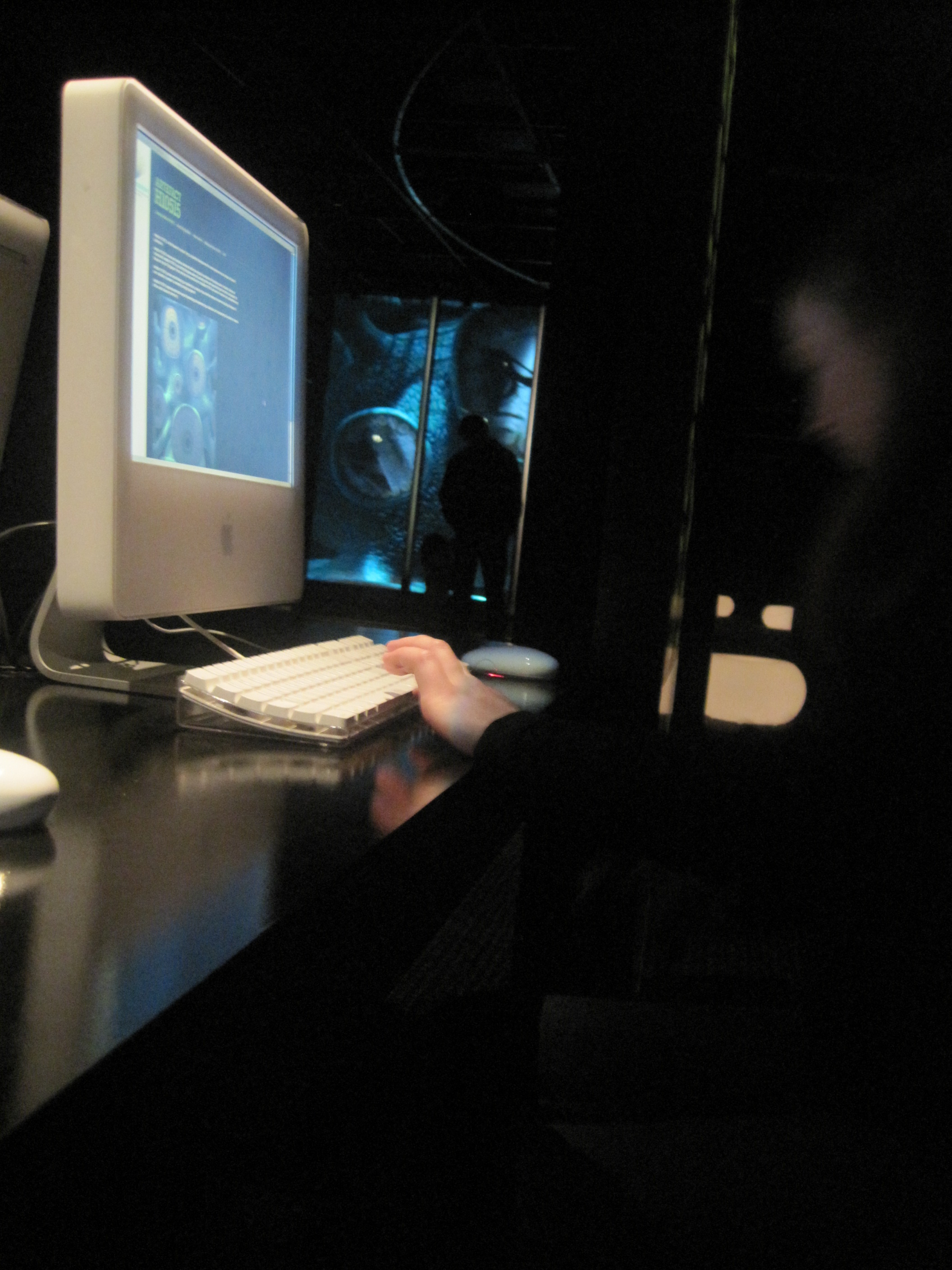 Resigned to drinking and eating more, we snapped some photos and left the space (again, reluctantly on my part). As the night wound down, I stood with our group of friends, laughing and talking, drank a little more, and lo and behold got recognized by Artistic Director of Artistic Programmes at the
Resigned to drinking and eating more, we snapped some photos and left the space (again, reluctantly on my part). As the night wound down, I stood with our group of friends, laughing and talking, drank a little more, and lo and behold got recognized by Artistic Director of Artistic Programmes at the 
